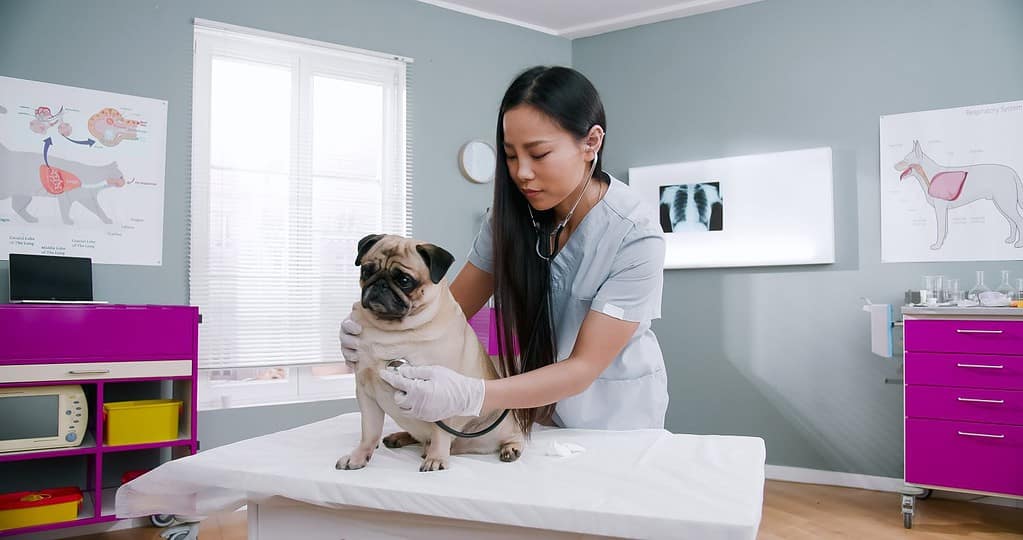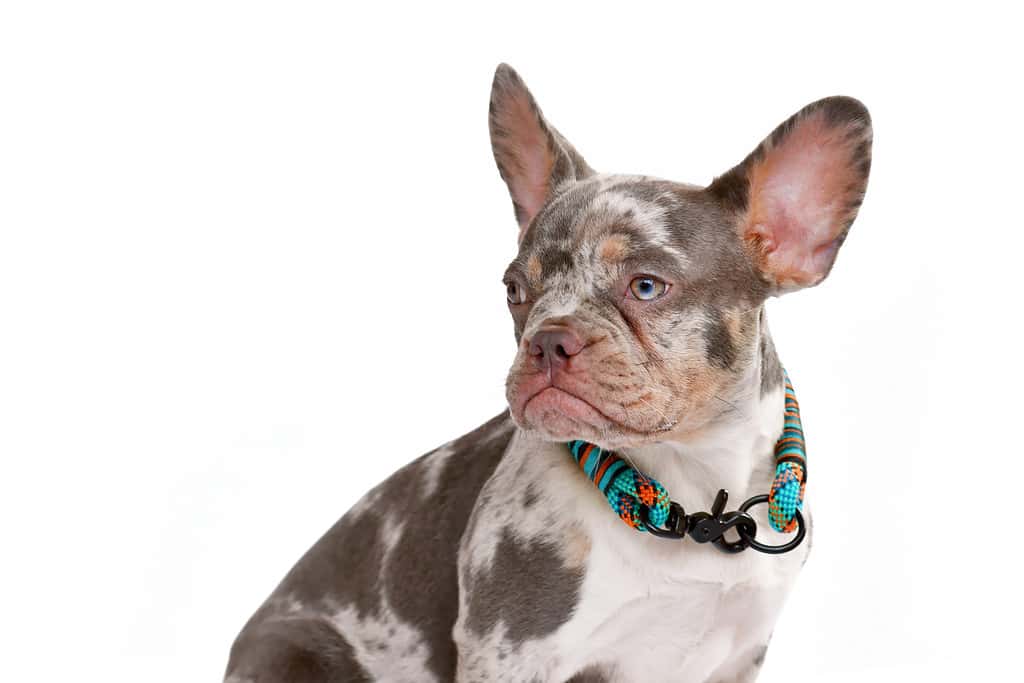Some people simply adore mixed-breed puppies. Others decide to go with a breeder and purchase a purebred puppy. While the discussion of shop vs. adopt can get heated, both sides have pros and cons.
If you’re looking to adopt a puppy, navigating through this decision can seem like a minefield. We’ll help you sort through the pros and cons in this article.
1. Purebred vs. Mixed Breed: Predictability

Whippets were bred to chase down prey. Therefore, they all have exceptionally similar traits to each other.
©Mindaugas Dulinskas/iStock via Getty Images
All dogs originally started as mixed-breed canines. However, dogs with certain traits were slowly bred together to increase the chance of those traits. Eventually, this breeding led to the purebred dogs we have today. Some breeds were bred specifically for hunting, while others were for guarding. Many people breeds are currently bred as lapdogs (think: Shih Tzu and Maltese).
This careful breeding has made purebred dogs very predictable. If you purchase a Labrador Retriever, you’ll have a pretty active, friendly, obedient canine. While socialization does play some role, these dogs have a huge genetic leaning towards certain traits.
This predictability allows you to choose the best dog for your situation. If you’re very active, you can choose a more active dog.
Mixed breeds are much less predictable. The average mutt from a shelter can contain the genes from any number of dogs, so you never really know what you’re going to get. Even if you purchase a named mixed breed from a breeder (like a Maltipoo), you still don’t know what traits the dog will inherit from which parents.
Poodle mixes are currently popular because they’re advertised as non-shedding. However, you never know if a Poodle mix will be non-shedding, especially if one of their parents sheds. There is little to no predictability.
2. Purebred vs. Mixed Breed: Health

Some purebred dogs, like Pugs, are exceptionally unhealthy.
©VesnaArt/Shutterstock.com
Purebred dogs became purebred largely through inbreeding. All purebred dogs are inbred, at least a little bit. While this makes them very predictable, it also increases the chance of health problems. Rare recessive traits are more likely to become common in these enclosed breeding communities.
Therefore, many purebred dogs have health issues that are rare in the wider canine community.
Because mixed breeds inherit traits from a wider gene pool, they’re much less likely to develop genetic conditions. They tend to have fewer inherited health problems. That doesn’t mean they won’t have any health problems, but they do have a lower chance.
3. Purebred vs. Mixed Breed: Cost

Frenchies are currently the most expensive dog breed.
©Firn/iStock via Getty Images
Purebred dogs tend to be pretty expensive. The average cost of a purebred puppy is $1,650. However, that varies widely. Some dog breeds are more expensive, while others are cheaper. Here’s a quick rundown of some common purebred dogs and their price:
- French Bulldog: $3,000 to $10,000
- Yorkshire Terrier: $1,500 to $6,000
- Pomeranian: $500 to $3,000
- Cavalier King Charles Spaniel: $1,500 to $4,000
- Beagle: $400 to $1,500
- Bulldog: $2,500 to $7,000
- Poodle: $800 to $4,000
- Dachshund: $400 top $1,500
- Golden Retriever: $500 to $3,000
- German Shepherd: $500 to $3,000
- Labrador Retriever: $800 to $4,000
- Husky: $400 to $1,500
- Doberman Pinscher: $500 to $2,500
- Great Dane: $400 to $1,500
Mixed breeds tend to be much cheaper. However, again, it depends largely on the type of mixed breed. If you go purchase your average mixed dog from the shelter, you’re looking at an adoption price of $100 to $300. “Oops” puppies from your neighbor may be a similar price or even free!
However, some popular mixed breeds can cost about the same as purebred dogs. Often, this is because of their perceived rarity.
- Cockapoo: $400 to $1,500
- Cavapoo: $500 to $2,000
- Chug: $300 to $1,000
- Maltipoo: $500 to $2,500
- Puggle: $400 to $1,200
- Goldendoodle: $500 to $3,000
- Beagador: $400 to $1,500
- Labradoodle: $800 to $4,000
- Schnauzerdoodle: $500 to $2,000
- Boxerdoodle: $500 to $2,000
- Rottie Lab: $500 to $2,000
Of course, these are just estimates. Where you’re located and the specific breeder you’re using matter a lot. Adopting a mixed dog from the shelter is probably the most affordable option. You can also find purebred dogs in the shelter, and they’re usually priced the same as a mixed breed.
Therefore, it’s often much cheaper to purchase a dog from the shelter, no matter what type of dog you’re purchasing. Going through a breeder is more expensive, as you’re paying for the breeder’s expertise and months of time.
4. Purebred vs. Mixed Breed: Breed-Specific Resources

Mixed-breed dogs tend to have fewer resources at their disposal, which also makes them more likely to end up in a shelter.
©Kandji/Shutterstock.com
You can find tons of resources about purebred dogs. There are often established clubs, community resources, and books to help you solve breed-specific problems. Many clubs also provide a list of the health tests and breeder standards they recommend, which you can use when choosing a puppy.
Many purebred dogs have known problems. However, at least they are known and often come with resources to help solve those issues. For instance, smaller breeds often have a harder time potty-training, but breeders often know this and help adopters with this hiccup. German Shepherds need more socialization, so many breeders start socializing them early.
Mixed breeds don’t have these resources, so dealing with their potential behavioral problems can be harder. Furthermore, it can be challenging to prevent issues because you don’t know what to expect.
5. Purebred vs. Mixed Breed: Breed Proof

Is this a Maltipoo or not? It’s impossible to know.
©MrKawa/Shutterstock.com
A quality purebred dog will come with some proof of its breed, usually in the form of an AKC registration. This paperwork lets you quickly prove what breed your dog is (and isn’t).
Mixed breeds don’t have this luxury. Instead, they’re often labeled as whatever dog they look like, even if they aren’t actually related to that dog. Even animal professionals like shelter workers and vets are very bad at labeling a dog’s breed. Most dogs get mislabeled for this reason.
This fact may not seem like a big deal until you deal with breed-specific legislation, airline rules, or even your home insurance. Not having that proof can make it harder to advocate for your dog.
Furthermore, it is very easy for a breeder to call their mixed breed dog a particular breed when they aren’t. Many Maltipoos are not actually a mix of Maltese and Poodle. There is no way to prove what sort of dog a puppy is unless you were there for the breeding. No one defines what a “Maltipoo” is, allowing breeders of all sorts to use that term.
It is possible to lie on AKC registration, as well. However, this is more challenging and doesn’t happen as often. Plus, it’s easy to spot a mixed breed from a Boxer. Boxers have very specific traits, like all purebred dogs. However, spotting the difference from one mixed breed to another is very challenging, as they have a huge variability.
6. Purebred vs. Mixed Breed: Availability

Labrador Retrievers are very popular dogs and are widely available.
©Vasyl Dolmatov/iStock via Getty Images
You can often find a mixed-breed dog at your local shelter. However, finding specific mixed breeds can be a challenge. There are often not many breeders who specialize in these mixed dogs, as the AKC does not recognize them. If you’re set on a rarer mixed breed, you’ll probably have to travel to get it.
If you’re interested in any mixed breed, your local shelter or animal rescue probably has many options.
Purebred dogs can be rare or common, depending on the breed. Your location may also play a role. Sometimes, breeders may seem concentrated together, often because they got their breeding dogs from each other.
It’s much easier to start breeding Poodles when a Poodle breeder already lives in the next town. It can be much more challenging if you’re in a completely different country.
That said, many of the popular dog breeds are common enough to be found just about anywhere in North America and Europe. German Shepherds, Bulldogs, and Labrador Retrievers all fall into this category.
The photo featured at the top of this post is © swapan_banik/iStock via Getty Images
Ready to discover the top 10 cutest dog breeds in the entire world?
How about the fastest dogs, the largest dogs and those that are -- quite frankly -- just the kindest dogs on the planet? Each day, AZ Animals sends out lists just like this to our thousands of email subscribers. And the best part? It's FREE. Join today by entering your email below.
Thank you for reading! Have some feedback for us? Contact the AZ Animals editorial team.






